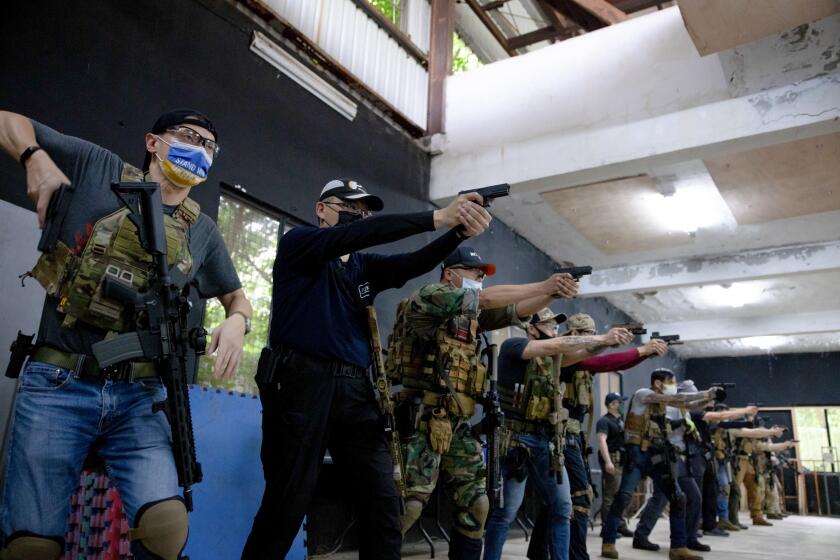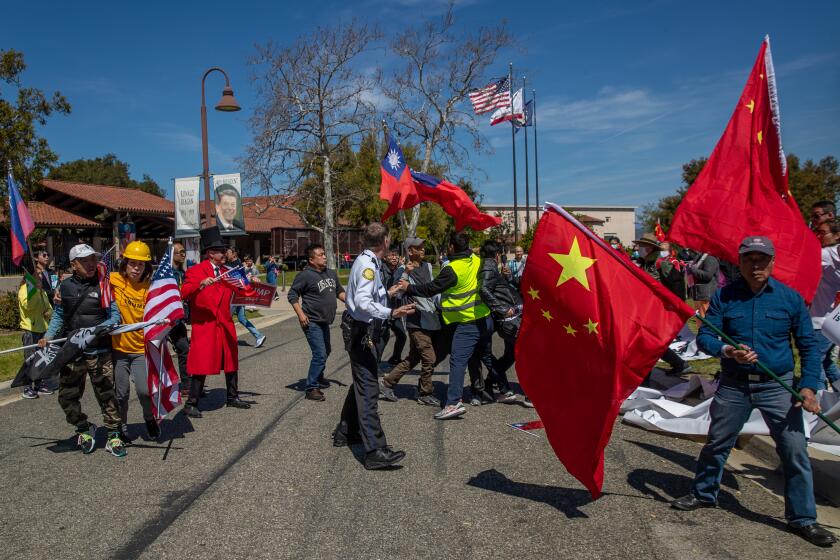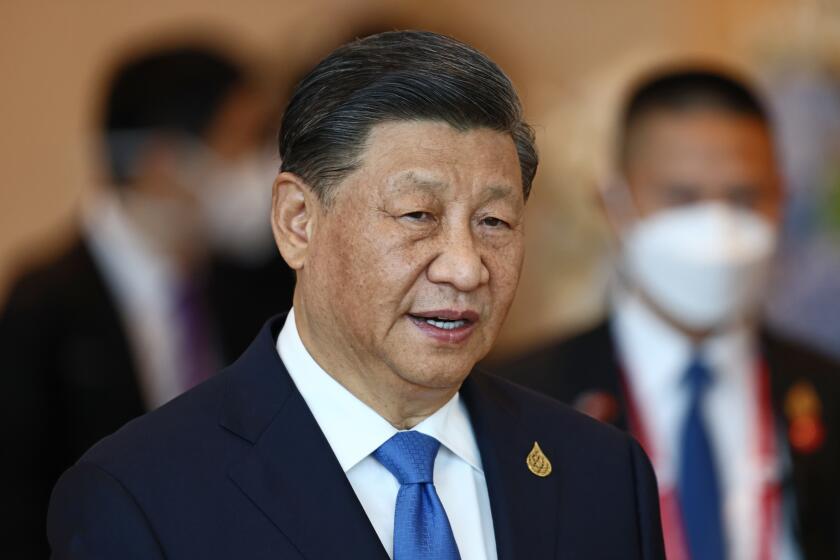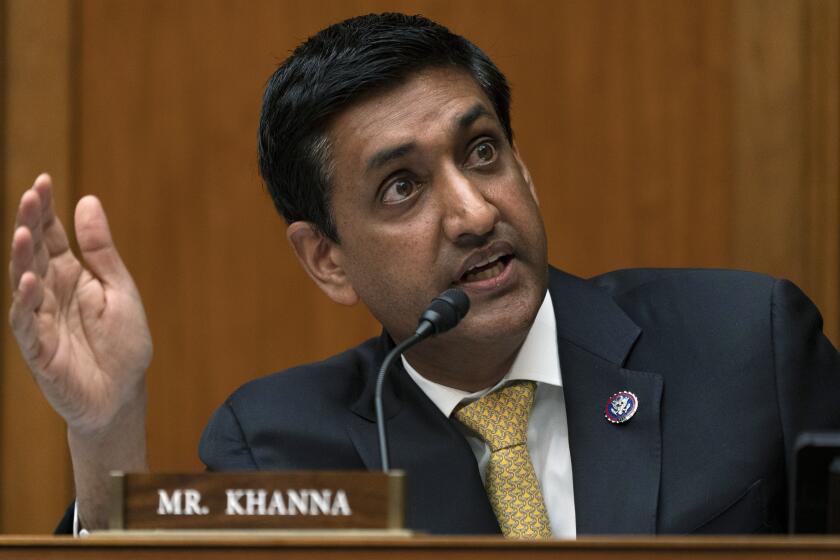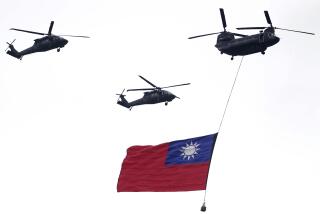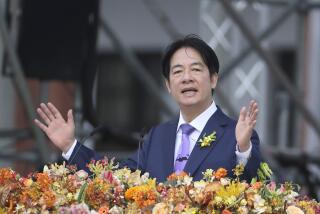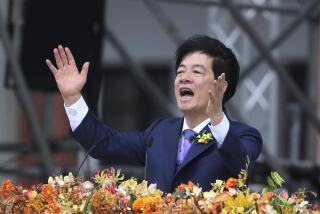Taiwan’s president meets with Kevin McCarthy in California. What her visit says about Taiwan’s future
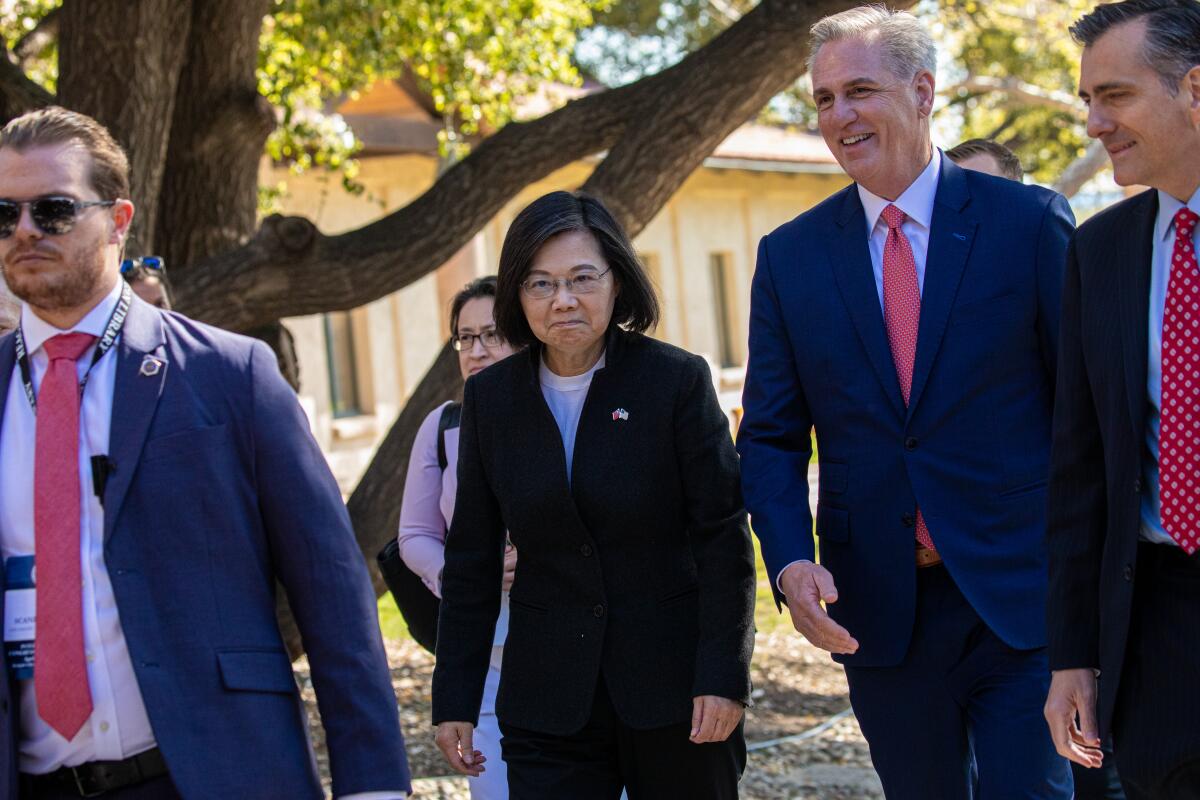
- Share via
TAIPEI, Taiwan — In Southern California, Taiwanese President Tsai Ing-wen met with U.S. House Speaker Kevin McCarthy on Wednesday in a show of the strength of relations between Taipei and Washington.
On the other side of the world, Tsai’s predecessor, Ma Ying-jeou, was in China on his own symbolic sojourn, touting instead the historic ties between Taiwan and the mainland.
The simultaneous visits to rival superpowers by Taiwanese presidents past and present underscore the increasing precariousness of peace on the democratically ruled island, and the uncertain path to maintaining it as relations between China, the U.S. and Taiwan have grown strained.
Those frictions have raised the stakes for Taiwan’s presidential election next year, in which Tsai will not be running for reelection and voters are expected to prioritize how to deal with tensions across the Taiwan Strait. As representatives of the island’s two main political parties, Tsai and Ma represent opposing approaches to upholding the status quo — whether to lean more toward Washington or Beijing, respectively.
Since Russia invaded Ukraine, more Taiwanese say they are willing to fight if attacked by China. But without firearms or sufficient military training, many wonder how to prepare.
“Ma Ying-jeou and Tsai Ing-wen’s trips show the world two strategic choices,” said Chen Fang-yu, assistant professor of political science at Soochow University in Taiwan. “It’s the democratic versus autocratic blocs. These two people just selected totally different directions.”
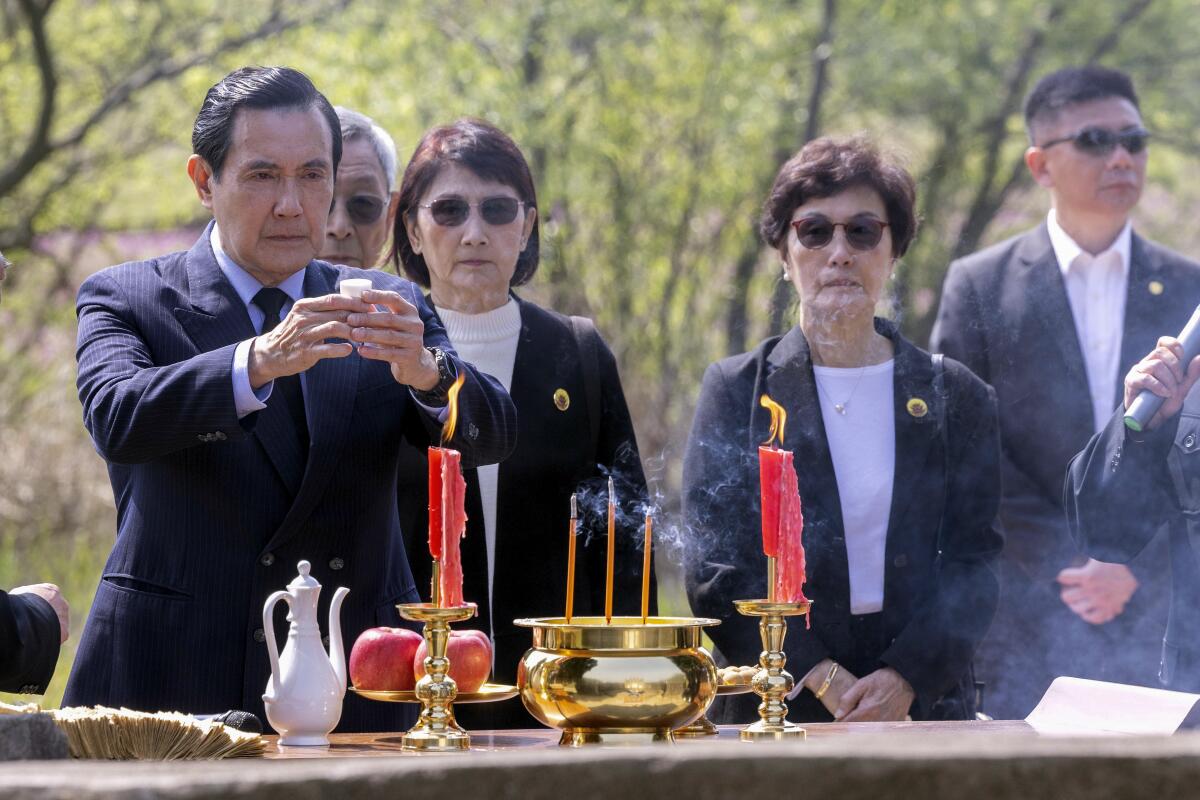
Those diverging paths come as Sino-U.S. relations have deteriorated to their lowest level in decades as the two countries vie for the upper hand in technological, economic and political influence. At the center of the growing hostility is Taiwan, which Beijing considers a part of China and has vowed to retake, by force if necessary.
The U.S. does not have official diplomatic ties with Taiwan. For decades, Washington has adhered to what is known as the one-China policy, which acknowledges but does not recognize China’s territorial claim. The U.S. is also obligated to sell Taiwan arms to defend itself, but has not committed to sending military assistance in the event of an attack.
Taiwanese President Tsai Ing-wen met in L.A. with House Speaker Kevin McCarthy, intensifying an intractable ideological divide among immigrants.
The approach, known as strategic ambiguity, is meant to deter China from launching a military assault and Taiwan from declaring independence. But Beijing’s crumbling relationship with both Taipei and Washington has raised the specter of military conflict over the next few years.
While a growing segment of Taiwan views the Chinese Communist Party unfavorably and identifies solely as Taiwanese, the vast majority of the island’s 23 million people prefer to keep the status quo, over independence from or unification with China.
The CIA director says U.S. intelligence shows that President Xi Jinping has instructed China’s military to ‘be ready by 2027’ to invade Taiwan.
Opinions on how best to do so are deeply divided between Tsai’s ruling Democratic Progressive Party, or DPP, and Ma’s historically dominant Nationalist Party, also known as the Kuomintang, or KMT. The DPP favors a closer relationship with the U.S. over China, though critics say that could provoke Beijing’s ire and doesn’t guarantee military assistance. The KMT believes that warmer ties with Beijing are crucial to preserving peace, but its detractors are wary of becoming too cozy with an authoritarian government.
Tsai, who won reelection in 2020, espouses a more pro-U.S. international policy that stresses Taiwan’s sovereignty. “In our efforts to protect our way of life, Taiwan is grateful to have the United States of America by our side,” she said Wednesday in a news conference with McCarthy.
In 2016, Beijing cut diplomatic contact with Tsai after the then-newly elected president failed to endorse the concept that Taiwan and the mainland are part of one China.
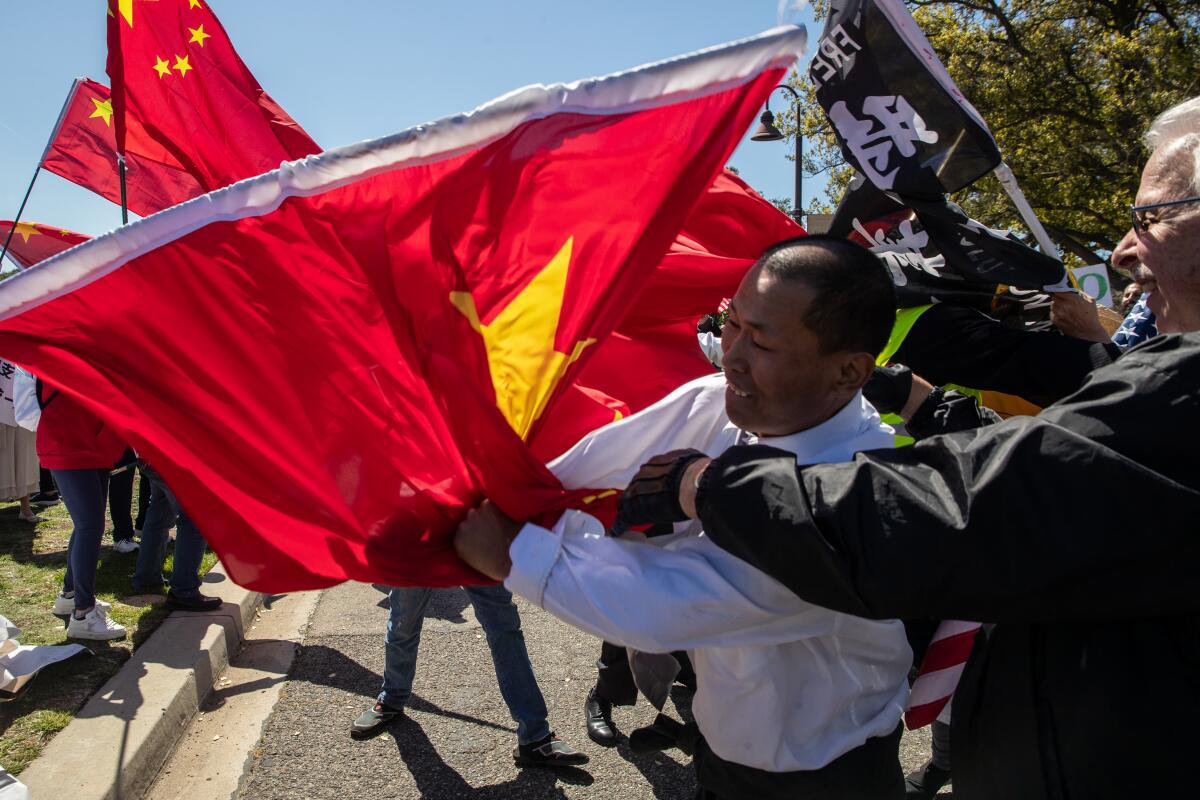
By contrast, Ma, who served as president from 2008 to 2016, publicly reiterated the notion during his trip this week, prompting some criticism from Taiwanese media and the Mainland Affairs Council in Taiwan. Before Ma, whose 12-day tour began March 27, no former or incumbent president had visited the mainland since the KMT lost the civil war in China and fled to Taiwan in 1949. In a historic meeting in 2015, Ma met Chinese leader Xi Jinping in Singapore for the first talks between Beijing and Taipei.
While a China trip by the former president holds less political sway, Ma’s actions could help the party gauge Taiwanese voters’ appetite for closer ties with Beijing ahead of next year’s election. Though the Tsai administration has deepened its partnership with the U.S., the KMT might try to capitalize on doubts over the U.S. commitment to defending Taiwan, analysts said.
“With U.S.-China relations moving from engagement to competition, that broadens traditional cross-strait relations to trilateral relations,” said Sung Wen-ti, a political scientist with Australia National University’s Taiwan Studies Program. “Taiwan is going to be under constant pressure to choose one side or another.”
The KMT has also argued that it is better suited to manage relationships with both Beijing and Washington, given the party’s friendlier stance toward China and potential unification. While the KMT won a sweeping victory in local elections in November, a growing mistrust of Beijing has weighed on the party’s appeal in the last few presidential elections, particularly among young voters.
The next Taiwanese president has the potential to reshape cross-strait relations, with implications for military strategy in the broader Asia-Pacific region. As rhetoric on Taiwan has heated up, other countries such as Australia and Japan have grown wary of Beijing’s aggression and looked to bolster their own defense capabilities.
Rep. Ro Khanna is heading this weekend to the self-ruled island claimed by China. The trip is likely to add to tensions between the U.S. and China.
In August, Beijing launched an unprecedented series of military drills around the island, including sending missiles, warplanes and warships, in retaliation after outgoing House Speaker Nancy Pelosi (D-San Francisco) visited Taipei and met with Tsai.
Wednesday’s meeting between Tsai and McCarthy (R-Bakersfield), at the Ronald Reagan Presidential Library in Simi Valley, came during a U.S. stopover after the Taiwanese leader’s 10-day trip through New York, Guatemala and Belize. The arrangement was largely seen as an attempt to make the encounter more palatable than Pelosi’s trip and avoid stoking further hostility across the Taiwan Strait.
China has threatened to retaliate regardless. Chinese Ministry of Foreign Affairs spokeswoman Mao Ning said Tuesday that China firmly opposed the meeting.
On Wednesday, China launched a three-day inspection of cargo and construction ships in the Taiwan Strait, according to the Fujian Maritime Affairs WeChat account. Taiwan’s Mainland Affairs Council called the operation a violation of maritime practices and an escalation of cross-strait tensions, and is prepared to take countermeasures.
Still, China’s military response may likely be more restrained than it was in August, analysts said. Actions that exceed those drills could further antagonize Taiwanese people ahead of the presidential election, as well as undermine China’s attempts to position itself as a stable and reliable diplomatic partner to other countries.
“The more ramped-up [Beijing] makes its threats right now, the more salient that’s going to become in Taiwanese civil society,” said Lev Nachman, a political science professor at National Chengchi University in Taiwan. “That would be a mistake on their end.”
David Shen of The Times’ Taipei bureau contributed to this report.
More to Read
Sign up for Essential California
The most important California stories and recommendations in your inbox every morning.
You may occasionally receive promotional content from the Los Angeles Times.
